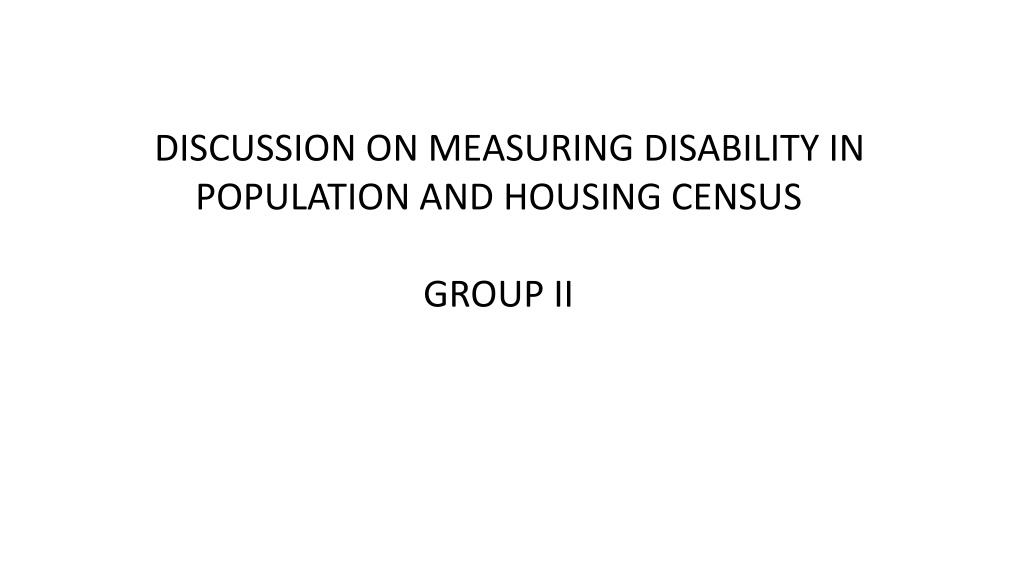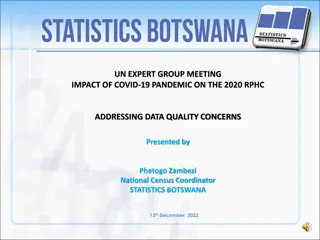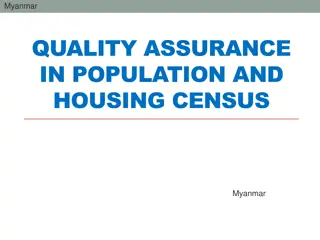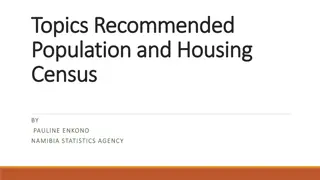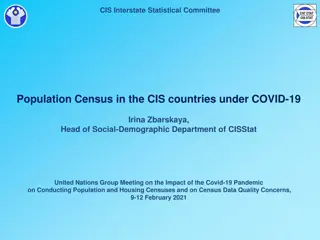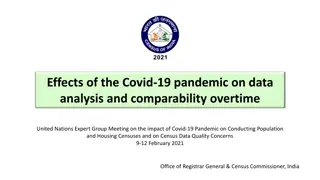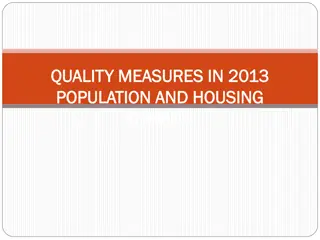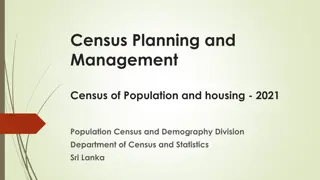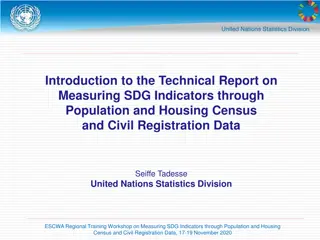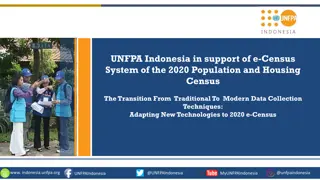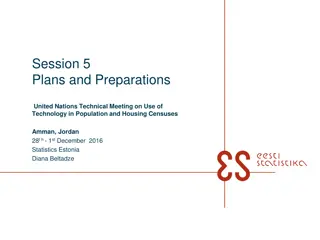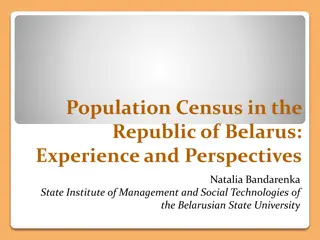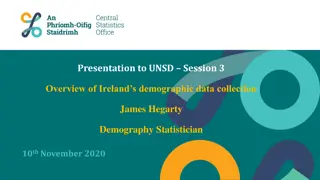Challenges in Measuring Disability in Population and Housing Census
The discussion delves into the questions asked on disability in recent censuses, testing of these questions across countries, use of proxy respondents to gather data, difficulties in translating questions into local languages, and challenges with scaled response categories. It highlights issues such as distortion in translation, difficulty in obtaining accurate data, and the subjective nature of disability assessment.
Download Presentation

Please find below an Image/Link to download the presentation.
The content on the website is provided AS IS for your information and personal use only. It may not be sold, licensed, or shared on other websites without obtaining consent from the author. Download presentation by click this link. If you encounter any issues during the download, it is possible that the publisher has removed the file from their server.
E N D
Presentation Transcript
DISCUSSION ON MEASURING DISABILITY IN POPULATION AND HOUSING CENSUS GROUP II
What questions were asked on disability in the last census or will be asked the census will be taken in 2017 or 2018? Qn: Does [NAME] has difficulty (a) Walking (b) Seeing (c) Hearing (d) Cognition (e) Self-care (f) Communication Also albinism was added In Tanzania and Swaziland This Washington group was asked in Ethiopia and Sudan as well, though in Ethiopia was introduced only during pilot but not actual enumeration
Were the questions on the disability tested? If so, what was tested and what were the results? The question was tested in all countries except for Libya where did not conduct Population Census There were some degree of disability noted, people didn t hide much on disability for the member of the household
What is the experience on the use of proxy respondents to obtain data on disability about other members of the household? It is difficult to get to the correct degree of disability, though respondent may be eager to mention disability of a person
What is the experience on the translation of questions on disability into different local languages in the country? Most of the time the question is distorted from its true meaning through translation and hence decrease credibility of the disability data obtained
If the question(s) on disability included the use of scaled response categories, what was the experience? Are they easily translated into local languages and easily understood by respondents? It is difficult to get the right response categories as this question is more subjective (depend on someone view on level of disability difficulties one have) It is not easy to translate into local languages as it impose some difficulties in understanding to respondents
What is the overall experience in how the questions on disability worked in the field? Did respondents easily provide the information? Did the interviewers ask the questions as intended? Generally disability questions is very sensitive, hence respondent pause a little bit before starting to answer They don t ask questions as intended, normally there is a degree of humanity which try to pull back respondent
